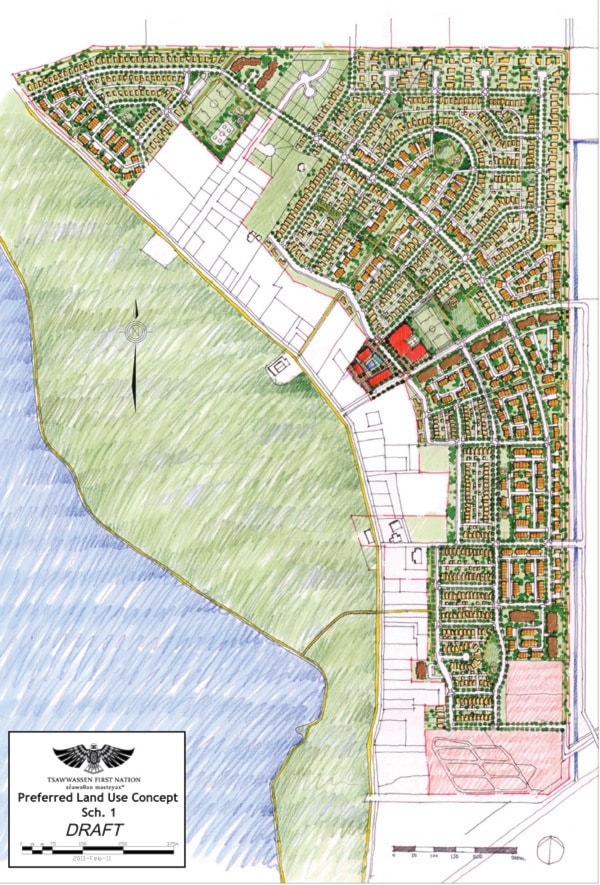The Tsawwassen First Nation hosted an open house last night (March 10), inviting the greater community to see the draft of its new Neighbourhood Plan.
The focus of the evening was the mainly residential and community components of TFN's Land Use Plan, about 270 acres bordered by the industrial area to the north, a mixed-use commercial and business park to the east, the tidal zone to the west, and Highway 17 to the south.
The Neighbourhood Plan Advisory Committee, a team of TFN members, staff, elected officials and consultants, has hosted meetings and workshops with TFN families, property owners and out-of-town members to gather feedback, and now wanted to present the plan to the public although wider consultation is not required.
TFN elder and committee member Ruth Adams said the open house is to show people they want to be a good neighbours.
"I'm always saying being good neighbours is something you have to work at, and this is our way of working at it," she said.
The draft neighbourhood plan involves developing up to 932 single family homes on parcels 3,300-square-feet and up, 652 townhomes, and 280 units in up to five-storey apartment buildings, which would bring in an estimated population of 4,381 to the community.
Potential residents would purchase homes through an up to 99-year-lease from Tsawwassen Fee Simple Interest holders (TFSI).
The plan also includes a Village Centre, which lead consultant Richard Cook with Jorden Cook Associates described as featuring limited retail space (about 5,000-square-feet) for a coffee shop, medical office or small grocery store, gathering places for elders and youth, and perhaps a covered and open area for a farmers' market and artisans.
Another goal is to incorporate bicycling and walking routes that would provide a five minute pedestrian loop to at at least 90 per cent of residents.
As part of the vision when developing the plan, Cook said one word they focused on was "welcoming," pointing to the Great Blue Heron Way as an example of one way to link TFN with Delta and communities further afield.
The plan calls for a trail by that name which hopes are will eventually connect to Tsawwassen, Ladner, the B.C. Ferry Terminal, and beyond to other First Nations on Vancouver Island.
"It's really been quite inspirational," he said of elder Adams' idea.
Another unique aspect of the plan is the focus on cultural sustainability.
"Part of that is about setting aside future spaces where future things can happen," said Cook. "One of the things we discussed with the Neighbourhood Plan Advisory Committee was with respect to doing something that worked for not only the past generations and present generations, but also the future generations."
The next step is for the planning team to make final revisions and then present it to the TFN Legislature.
"There's a number of people who are very interested in moving it forward, from the development community and the families who own the land. So we would expect probably there would be some applications fairly soon after the plan is approved by the Legislature," said Cook.
"That would go through a number of engineering and environmental studies, geotechnical studies, but it will be a couple of years before you see the first house, very likely."
Developers that are already working with TFN property owners to manage the sale of their lands include The Aquilini Group and Colliers International.

